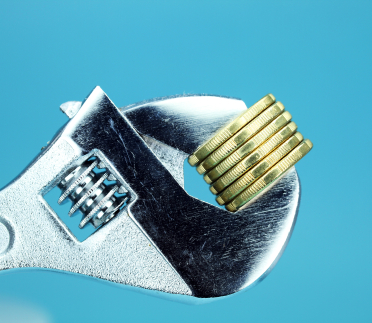- Know how often and how much your loan can adjust.
- Understand how your pre-pay penalty works.
- Compare an ARM to a fixed-rate mortgage.
Learn How to Refinance an Adjustable Rate Mortgage.
Adjustable Rate Mortgages at a Glance
Each Adjustable Rate Mortgage (ARM) has an initial rate, often called the "note rate" that is used to calculate the monthly payments at the start of the loan. This rate, and your monthly payments, is fixed for an initial period. The most common periods are 3, 5, 7, and 10 years, though other variations are possible. After the fixed period is over, a new interest rate and a new monthly payment are calculated. This new rate and payment then remains constant for a shorter time — typically 1 year — before being recalculated again. The rates and payments continue to reset periodically until the end of the mortgage term.
ARMS have one big advantage: a rock-bottom rate. ARMs frequently come with lower rates (and therefore, payments) than their fixed-rate brethren. For borrowers planning to stay in a home for a period matching the fixed period of the ARM, they can be a great choice. The shorter the fixed period, typically the lower the rate and initial payment.
ARMS have one big disadvantage: risk. Once the fixed period is over the rate and payment on your home loan can rise — often substantially. Although ARM loans come with built-in protections, called caps, that limit how much the rate can increase after the fixed period is over, over the life of the loan these caps tend to be protections against catastrophic rate rises. For example, a typical lifetime interest rate cap may be 6% over the initial note rate, which will not prevent rates and payments from rising substantially. Also, if rates rise, there is typically no good solution — while one can always refinance, any loan you choose would have a higher rate.
It is wise not to use an ARM unless you are confident you will sell the property within a year or two after the end of the fixed period.
Refinancing an ARM
ARMs can be refinanced. You can refinance an ARM to cut the interest rate or change the terms, such as the number of years to repay the loan. You may refinance at any time you want (as long as you meet the lender’s qualifying criteria). You may choose to refinance into another ARM or a fixed-rate mortgage. There should be no time restrictions for rate and term refinancing. Technically, you could refinance immediately after closing your loan, though it would not make financial sense to do so, given the closing costs.
Pre-Payment Penalty
First, contact your ARM lender, or review your ARM loan contract, to learn if your mortgage servicer will charge you an early-refinance penalty, and if so, when it will expire.
Second, contact several mortgage lenders to discuss the loan terms each can offer you based on your current financial situation. Once you have determined what the refinance will cost in terms of penalty charges, and what new loan terms are available to you, you can weigh the two options against one another to determine if the terms offered on the new loan will save you enough money to outweigh the cost of the penalties imposed by your current lender.
If you find that you will save more money by moving forward with a refinance now, then by all means, do so. However, if the penalties charged by your current lender outweigh the savings on your new loan, then wait until the penalty period expires before refinancing.
Refinance Criteria
A refinance application is based on four criteria, including the applicant’s:
- Debt-to-income ratio
- Credit rating and history
- Work history (two years of stable income)
- Loan-to-value (LTV) ratio of the property
LTV is the dollar value of the loan compared to the appraised value of the property. Note that the appraised value may not be the same as the tax value set by the county assessor. Applicants who meet the lender’s qualifications for these four factors will be approved for a refinance.
Typical loans are 3/1, 5/1, and 7/1 ARMs. These names explain the frequency of rate and payment recalculation. For example, a 3/1 ARM is fixed for the first 3-year period and is then recalculated every 1 year afterwards, and a 7/1 ARM has a fixed interest rate for 7 years before the first adjustment takes place. The 3/1 and 7/1 loans then adjusts annually.
Refinancing an ARM Today
In late September 2011, the average rate for a 30-year fixed-rate mortgage was 4.12%, 3.3% for a 15-year fixed-rate loan, and less than 3% for an adjustable-rate mortgage (ARM) loan. By comparison, five years ago a 30-year fixed-rate mortgage averaged 6.5%. These rates are the lowest recorded, and are perhaps the lowest since the 1950s.
According to a recent Associated Press analysis of Fair Isaac data, 40% of US households have high enough credit scores to qualify for a prime mortgage rate. However, according to real estate research firm CoreLogic, nearly a third of homeowners have nearly zero equity in their homes or are underwater on their mortgage, owing more than the house is now worth.
If your mortgage is 6.5% or higher, you have a two-year income history, a low DTI, a credit score above 680, and a loan-to-value (LTV) of less that 100%, go to the Bills.com mortgage refinance calculator to learn exactly how much you can save by refinancing your existing loan.
